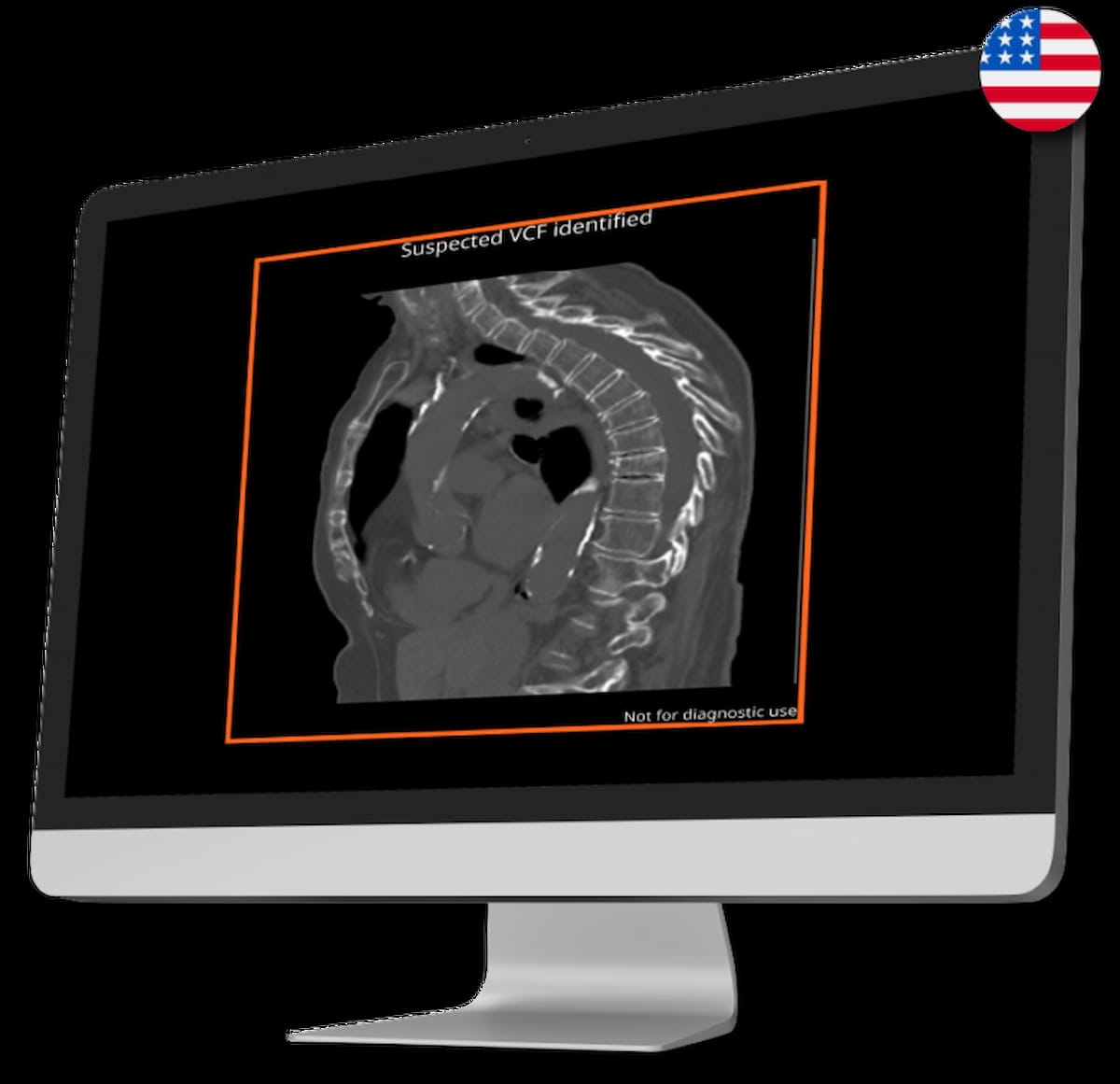FDA Clears CT-Based AI Tool for Detecting Vertebral Compression Fractures
The AI-enabled CINA-VCF algorithm can reportedly detect vertebral compression fractures within seconds after assessment of chest or abdominal CT scans.
A newly FDA-cleared artificial intelligence (AI) algorithm may bolster the early diagnosis of osteoporosis-related vertebral compression fractures that reportedly affect 750,000 patients annually in the United States and are commonly undetected.
By assessing chest or abdominal computed tomography (CT) scans, the CINA-VCF algorithm can diagnose and facilitate timely triage of vertebral compression fractures, according to Avicenna.AI, the developer of CINA-VCF.
Reportedly validated on 474 CT scans obtained from 38 scanner models and four different scanner manufacturers, the CINA-VCF algorithm for diagnosing vertebral compression fractures, based off of chest or abdominal CT scans, has garnered 510(k) clearance from the FDA. (Images courtesy of Avicenna.AI.)

Noting that CINA-VCF was validated on 474 CT scans obtained from 38 scanner models and four different scanner manufacturers, Avicenna.AI said the CINA-VCF tool offers strong sensitivity and detects vertebral compression fractures within seconds.
"Osteoporosis is a global burden affecting millions, especially postmenopausal women, and often goes unnoticed until symptoms like pain and loss of mobility appear," said Cyril Di Grandi, the co-founder and CEO of Avicenna.AI. "By detecting vertebral compression fractures early, we aim to help patients maintain better mobility and independence, enhance the well-being of those at risk, and reduce the burden on health-care systems worldwide.”
Meta-Analysis Shows Merits of AI with CTA Detection of Coronary Artery Stenosis and Calcified Plaque
April 16th 2025Artificial intelligence demonstrated higher AUC, sensitivity, and specificity than radiologists for detecting coronary artery stenosis > 50 percent on computed tomography angiography (CTA), according to a new 17-study meta-analysis.
New bpMRI Study Suggests AI Offers Comparable Results to Radiologists for PCa Detection
April 15th 2025Demonstrating no significant difference with radiologist detection of clinically significant prostate cancer (csPCa), a biparametric MRI-based AI model provided an 88.4 percent sensitivity rate in a recent study.